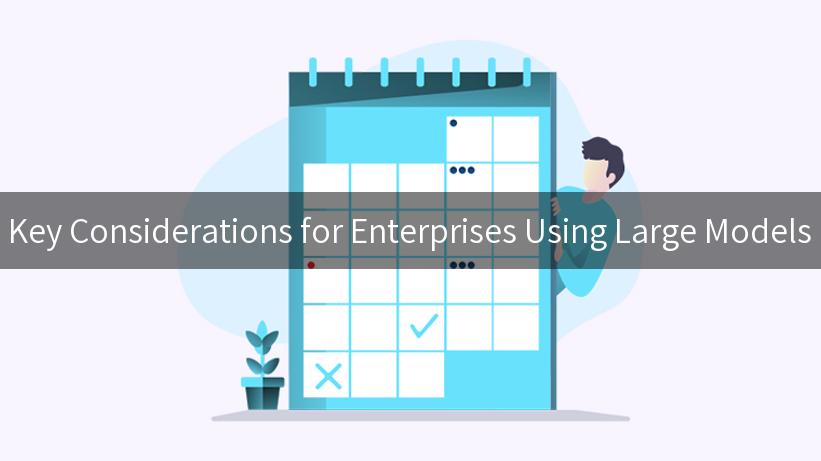
As businesses increasingly adopt artificial intelligence (AI) and machine learning (ML) for various applications, they are turning to large models that can handle complex tasks. However, deploying and managing these large models comes with its own set of challenges and considerations. This article will discuss key considerations for enterprises utilizing large models, with a specific focus on API calls, the significance of træfik, API Developer Portals, and effective API Documentation Management.
Understanding the Landscape of Large Models
Large models, especially those based on deep learning techniques, have demonstrated remarkable capabilities in tasks ranging from natural language processing to computer vision. However, these models can also be resource-intensive, requiring careful planning and management. Enterprises need to evaluate their infrastructure, data inputs, and specific use cases to ensure they derive maximum value from large models.
Why API Calls are Essential
To leverage large models effectively, enterprises often rely on API (Application Programming Interface) calls. An API acts as a bridge allowing different software applications to communicate with each other, providing a standardized method to request and exchange data.
-
Efficiency: An API enables organizations to integrate large models into existing workflows without altering the underlying processes. This saves time and enhances employee productivity.
-
Scalability: With the right APIs, businesses can scale their solutions quickly depending on demand. This makes it easier to accommodate a growing user base or increased data loads.
-
Interoperability: APIs facilitate interoperability between different systems and platforms, allowing enterprises to implement large model services seamlessly.
Implementing Træfik for Load Balancing
When using large models, ensuring that requests are routed efficiently is crucial, and this is where træfik comes into play. Træfik is an open-source HTTP reverse proxy and load balancer designed for microservices.
Key Features of Træfik:
-
Dynamic Configuration: Træfik automatically updates its configuration based on the services available. This means that as new instances of your large model API go up or down, Træfik can handle traffic without manual intervention.
-
SSL Management: Managing SSL certificates can be cumbersome, especially when integrating large models. Træfik simplifies this process with automatic Let’s Encrypt integration, ensuring secure API calls.
-
Monitoring and Metrics: Træfik provides built-in metrics to monitor performance, helping enterprises maintain the integrity and availability of their large model services.
Building an API Developer Portal
Creating a robust API Developer Portal is essential for enterprises looking to expose their large model capabilities. A well-designed portal serves as the central hub for developers, enabling them to understand, explore, and build upon the APIs provided.
Components of a Successful API Developer Portal:
-
User-Friendly Interface: The portal should have an intuitive layout that allows developers to easily navigate through documentation, API references, and tutorials.
-
Interactive Documentation: Including interactive elements in your API documentation can enhance the understanding of API functionality, making it easier for developers to experiment with API calls.
-
Versioning: Effective versioning strategies are vital for maintaining backward compatibility and ensuring a smooth transition for developers when updates are made to large model APIs.
-
Community Engagement: Actively fostering a community around your API provides developers with spaces to ask questions, report bugs, and share success stories.
API Documentation Management
Effective API documentation management is fundamental for enterprises engaging with large models. Comprehensive documentation ensures that developers can quickly understand how to use the APIs, reducing potential confusion and barriers to integration.
Key Considerations in API Documentation Management:
-
Clarity and Detail: Documentation should include clear explanations of API endpoints, request and response formats, error handling, and common use cases. Users should not need to dig deep to find relevant information.
-
Examples and Use Cases: Providing real-world examples of API calls will help developers see the potential of your large model APIs. This can bridge the gap between theory and practice.
-
Regular Updates: As the large model evolves, so too should the documentation. Regularly updating documentation to reflect the latest changes ensures that users are not working with outdated information.
-
Feedback Mechanism: Establishing a feedback mechanism allows users to suggest improvements or report issues with the documentation, fostering a culture of continuous improvement.
APIPark is a high-performance AI gateway that allows you to securely access the most comprehensive LLM APIs globally on the APIPark platform, including OpenAI, Anthropic, Mistral, Llama2, Google Gemini, and more.Try APIPark now! 👇👇👇
Conclusion
As enterprises venture into utilizing large models, the importance of API calls, effective load balancing with solutions like træfik, comprehensive API Developer Portals, and robust API documentation management cannot be overstated. Addressing these key considerations ensures that organizations can successfully deploy and manage large models, leveraging their full potential while enhancing the developer experience.
Example API Call Code Snippet
To give you a practical understanding, here’s a simple example of how an API call might look utilizing cURL to interact with a large model:
curl --location 'http://localhost:8080/api/v1/large-model' \
--header 'Content-Type: application/json' \
--header 'Authorization: Bearer YOUR_API_TOKEN' \
--data '{
"input": "What are the implications of using large models in enterprise solutions?",
"parameters": {
"model": "large-model-v1",
"temperature": 0.7
}
}'
Summary Tables
Here’s a summary table contrasting potential API features with trivial features frequently overlooked:
| Key Feature |
Potential Benefit |
Trivial Features |
| Dynamic Routing |
Directs traffic efficiently across multiple instances |
Static configurations |
| SSL Management |
Simplifies secure communication |
Manual certificate renewals |
| Comprehensive Metrics |
Provides insights into API performance |
Limited or no performance tracking |
| Interactive Documentation |
Enhances developer understanding |
Plain text documentation |
Using large models effectively requires strategic planning, development best practices, and continuous improvement in documentation and API management processes. By embracing these considerations, enterprises can navigate the complexities of AI implementation while maximizing their return on investment in AI technologies.